
Biology students expose exotic amphibians in the dunes
During the spring of 2021, a group of eight biology students from Leiden set out into the dunes in search of amphibians. Using DNA, they determined the geographic origin of the animals. And guess what? In many cases they discovered exotic populations of animals that do not naturally belong in The Netherlands. Today they publish their striking results in four scientific articles.
DNA can tell scientists a lot. For example, on the origin of exotics: species that have been introduced by humans and that are not part of the local biodiversity. PhD candidate Manon de Visser works in the research group of Ben Wielstra. She explains: ‘DNA varies, not only between different species, but also within a single species across its range. We can therefore use a piece of DNA as a kind of barcode to determine to which species an individual belongs and where it originally comes from.’
In the spring of 2021, biology students from Leiden investigated amphibians in the dunes. There was already a strong suspicion that some amphibians do not occur here naturally. Therefore, they took saliva or skin mucus samples from tree frogs, spadefoot toads, crested newts and midwife toads, using cotton swabs. ‘A bit like a corona test,’ says researcher Ben Wielstra.
-
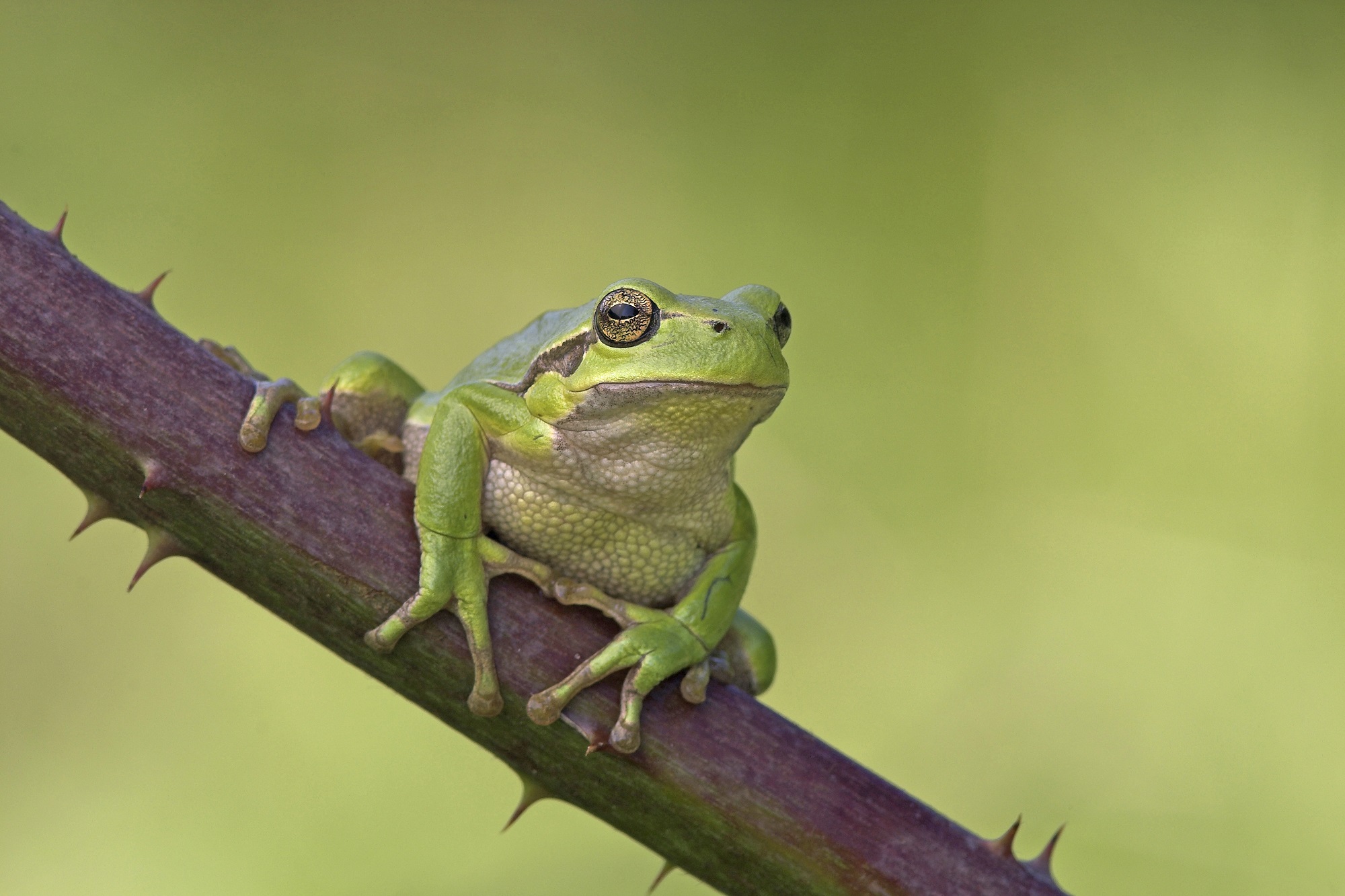
Tree frog (Hyla arborea). By Jelger Herder / RAVON. -
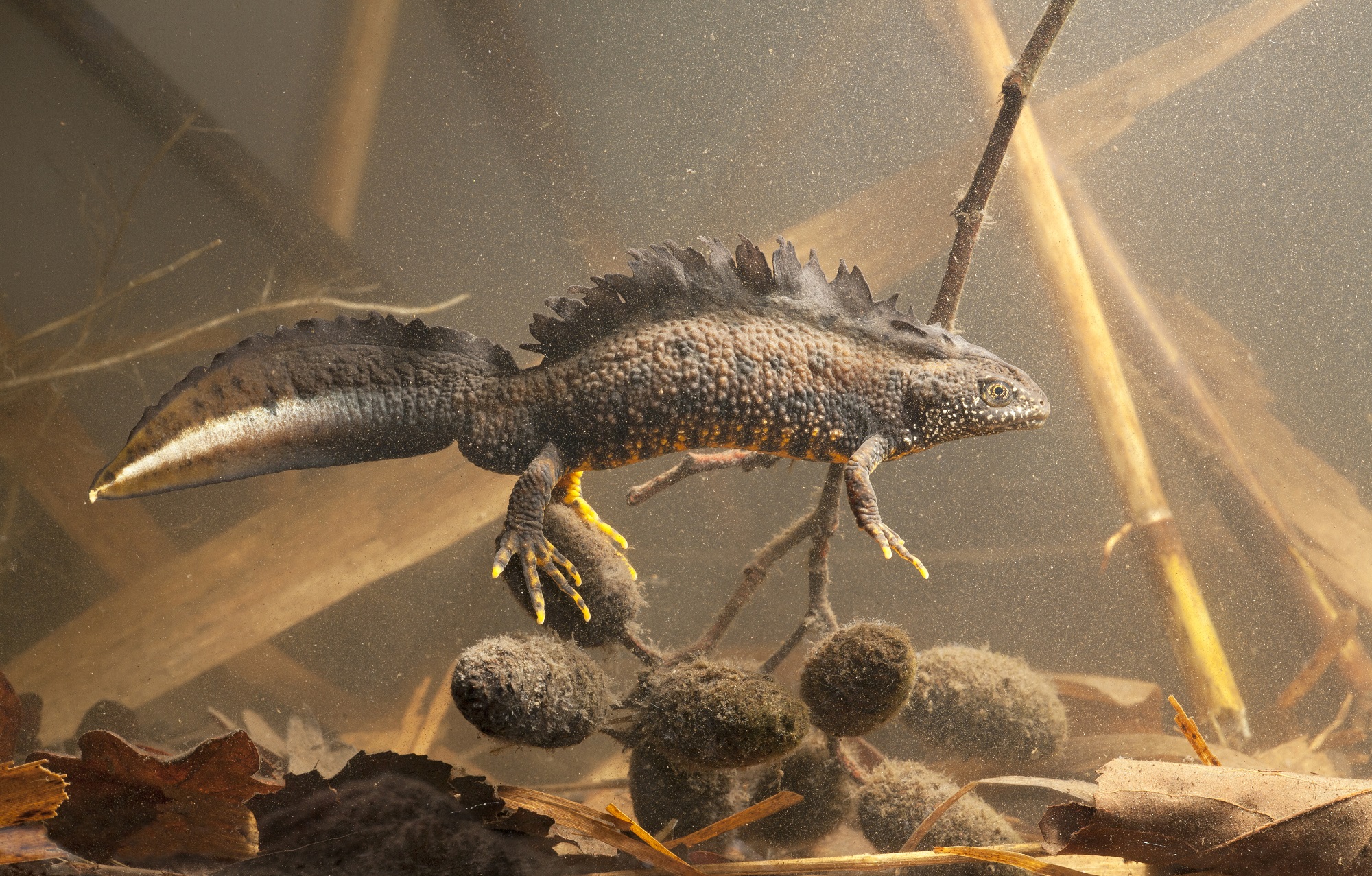
Great crested newt (Triturus cristatus). By Jelger Herder / RAVON. -
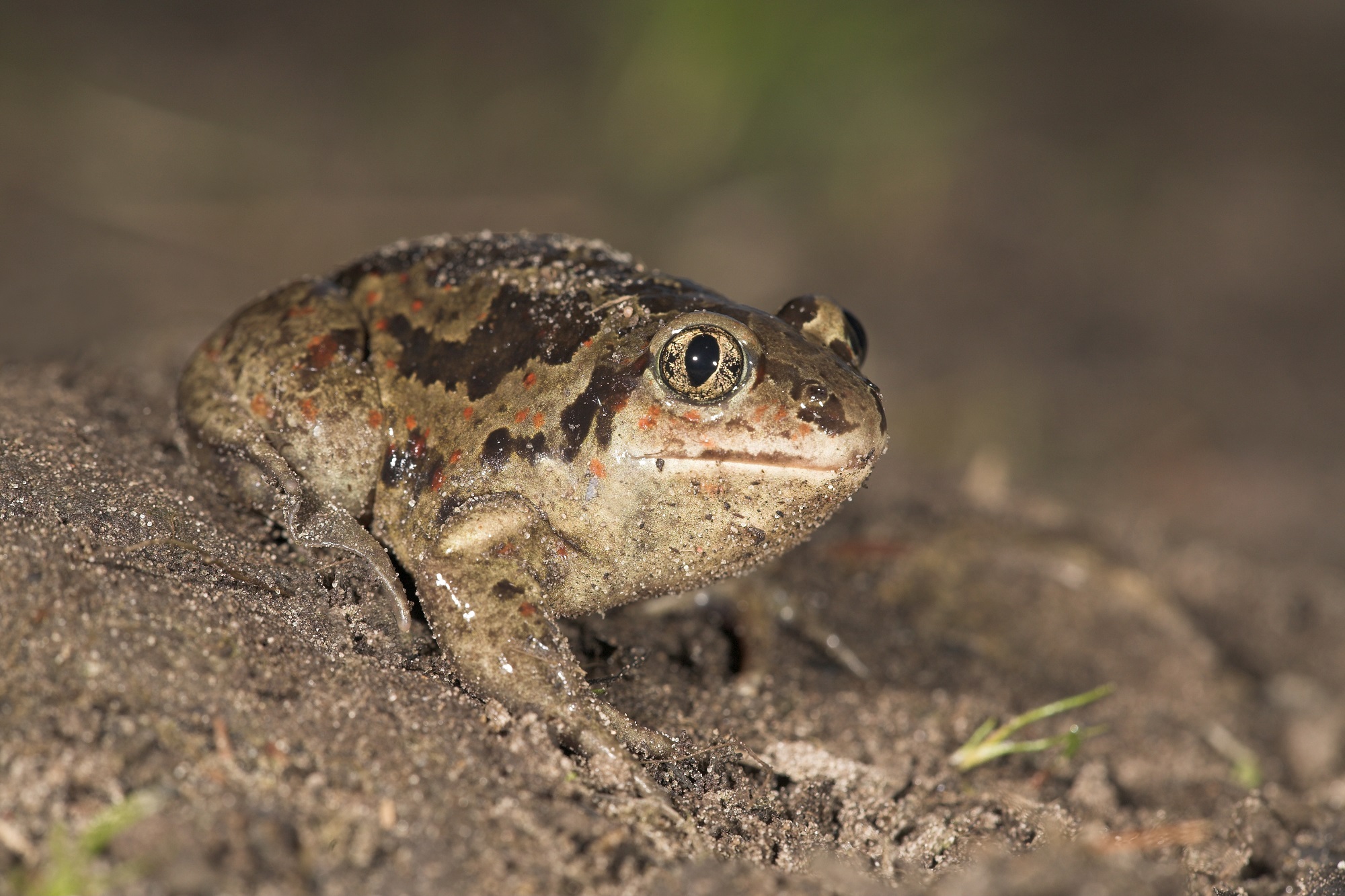
Spadefoot toad (Pelobates fuscus). By Jelger Herder / RAVON. -
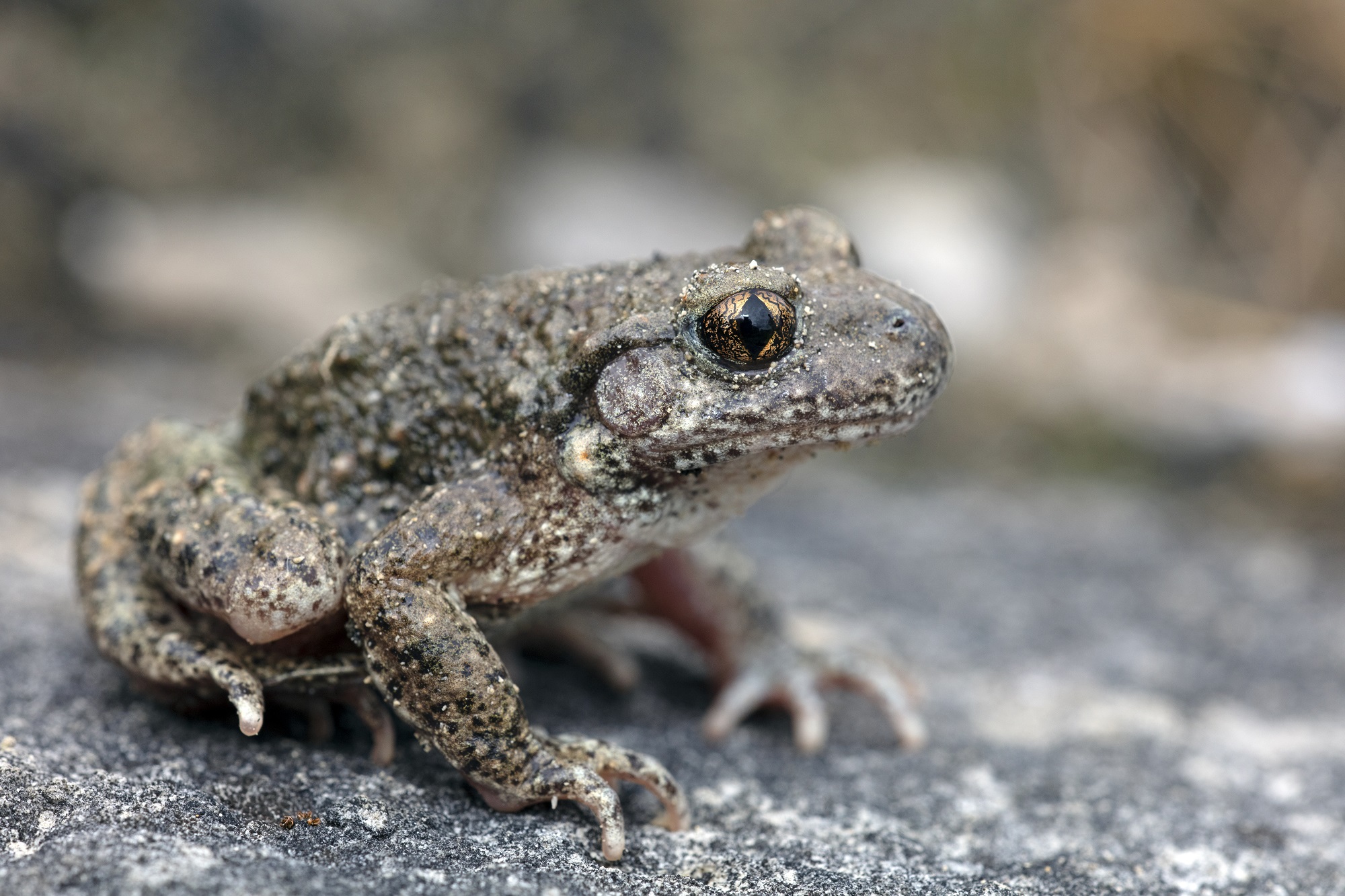
Midwife toad (Alytes obstetricans). By Jelger Herder / RAVON.
Cryptic tree frogs unmasked
Surprisingly, the team discovered two tree frog species that do not belong in the Netherlands at all. These have gone unnoticed until now, because the non-native species are very similar in appearance to the native European tree frog, which does occur naturally in the southern and eastern Netherlands
‘In such a case we speak of “cryptic species”. These species are virtually indistinguishable by eye, but can be recognized by DNA,’ explain Liam Oskam and Marit Kuijt, who studied the tree frogs for their thesis. They add: ‘Everyone was perplexed! We found the eastern tree frog en masse, for example in Meijendel, with a genetic profile originating from Greece. In addition, there also turned out to be Italian tree frogs in the Westduinpark near The Hague.’
Spadefoot toad: native species, but non-native population
In Callantsoog the students investigated the spadefoot toad. A species that, in the Netherlands, only natively occurs in the east. But the spadefoot toads from the dunes are genetically very different from the native populations: they have a DNA profile that originates from Eastern Europe.
‘The fact that the spadefoot toad is native elsewhere in the Netherlands, does not make the Callantsoog population any less invasive, even though it may sound like it,’ explain Nienke Prins and Stephanie Koster, who together analyzed the spadefoot toads. Invasive means that animals have ended up somewhere in an unnatural way, settled and then spread further. ‘The spadefoot toads do not originally occur in the dunes and they, for example, compete for food and habitat with the animals that actually belong there,’ say Prins and Koster.
Populations with the same fingerprint, what now?
The students also found populations of the great crested newt and the midwife toad that were located far away from their natural ranges. However, both species turned out to have a DNA profile that matches that of their Dutch counterparts. Nevertheless, the researchers still suspect that these are not natural populations either. Presumably, these animals were released here too.
‘The chance that the midwife toad migrated here by itself is negligible,’ say Maurits van de Vrede and Chris Vliegenthart, who worked on the project of this toad-like frog. The case of the crested newts is less clearcut: ‘Their dune population might be a historical remnant of a formerly larger distribution area,’ say Jurian de Brouwer and Bas Helder, who studied the species in question. More genetic research is needed to uncover the full story.
-
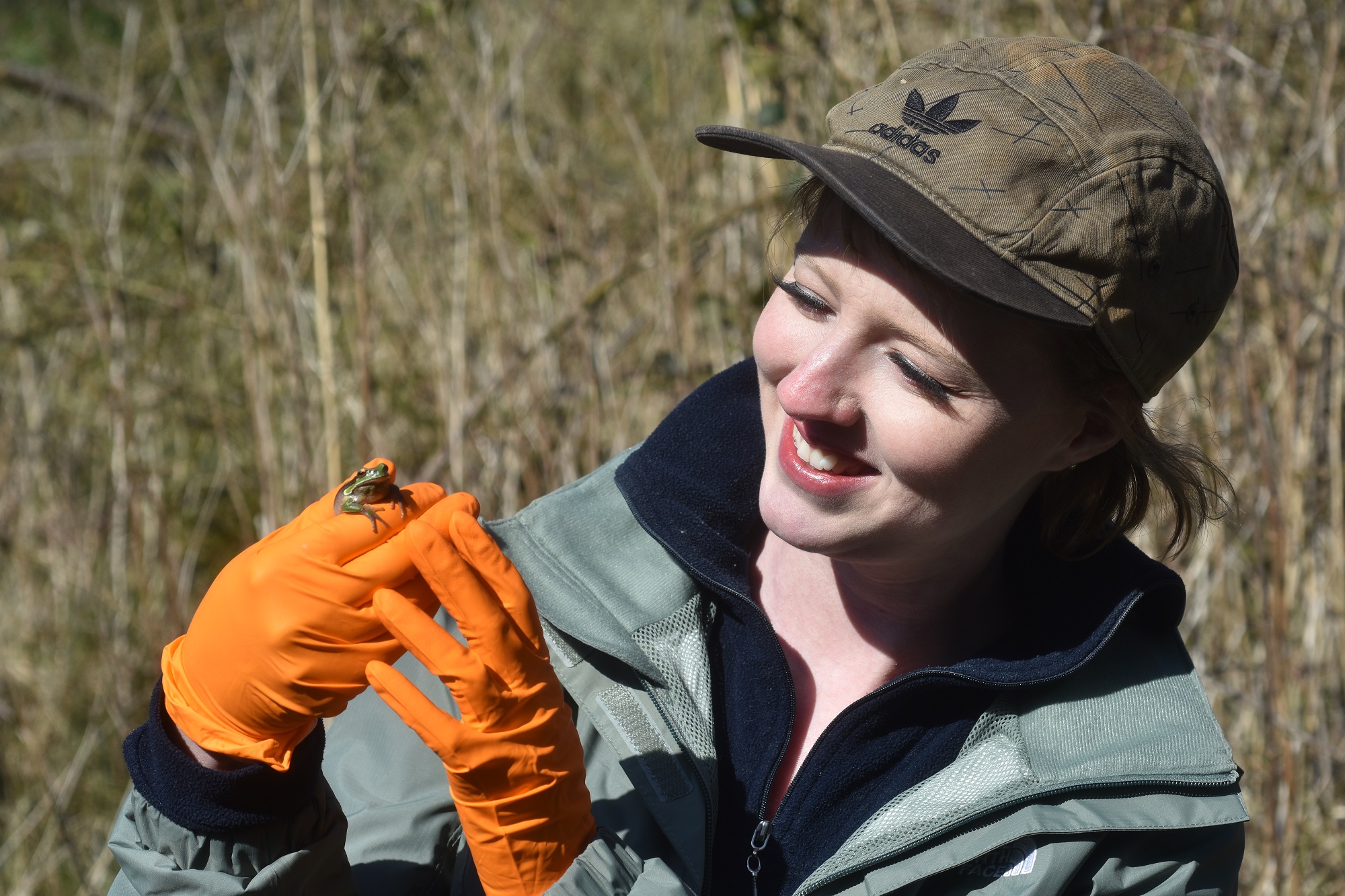
Fieldwork photos of the research team (Images by Christos Kazilas and Ben Wielstra). -
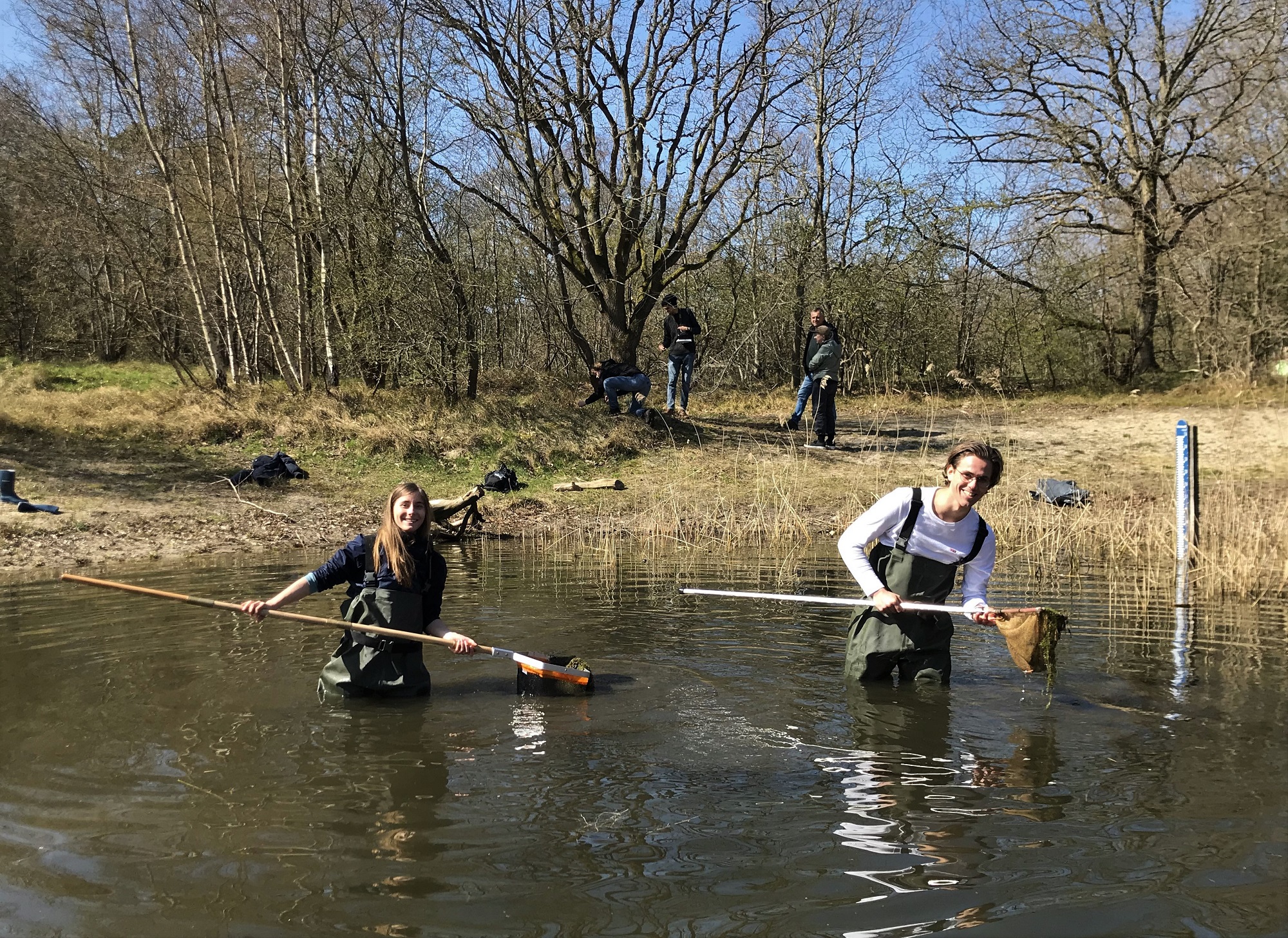
Fieldwork photos of the research team (Images by Christos Kazilas and Ben Wielstra). -
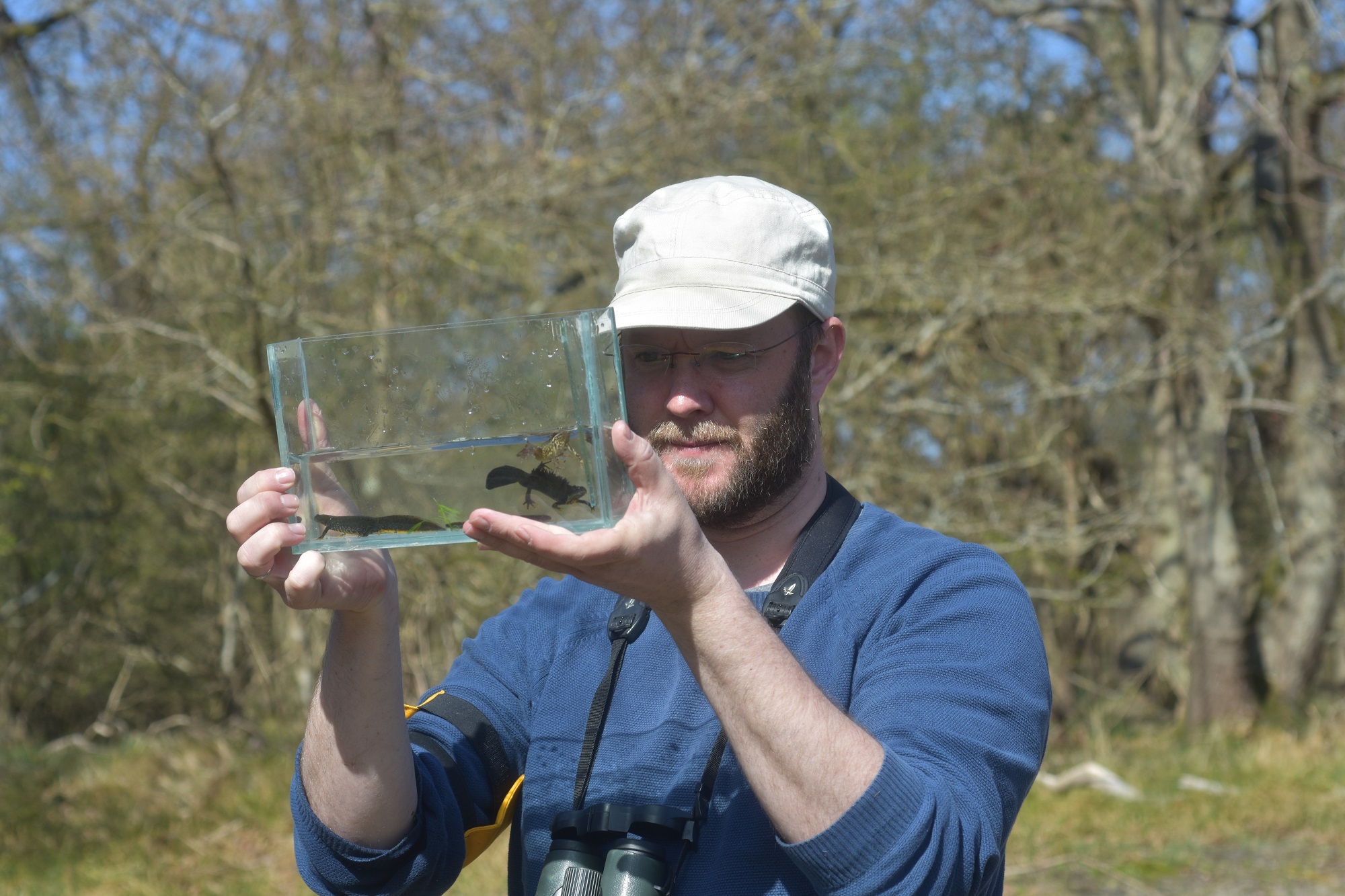
Fieldwork photos of the research team (Images by Christos Kazilas and Ben Wielstra). -
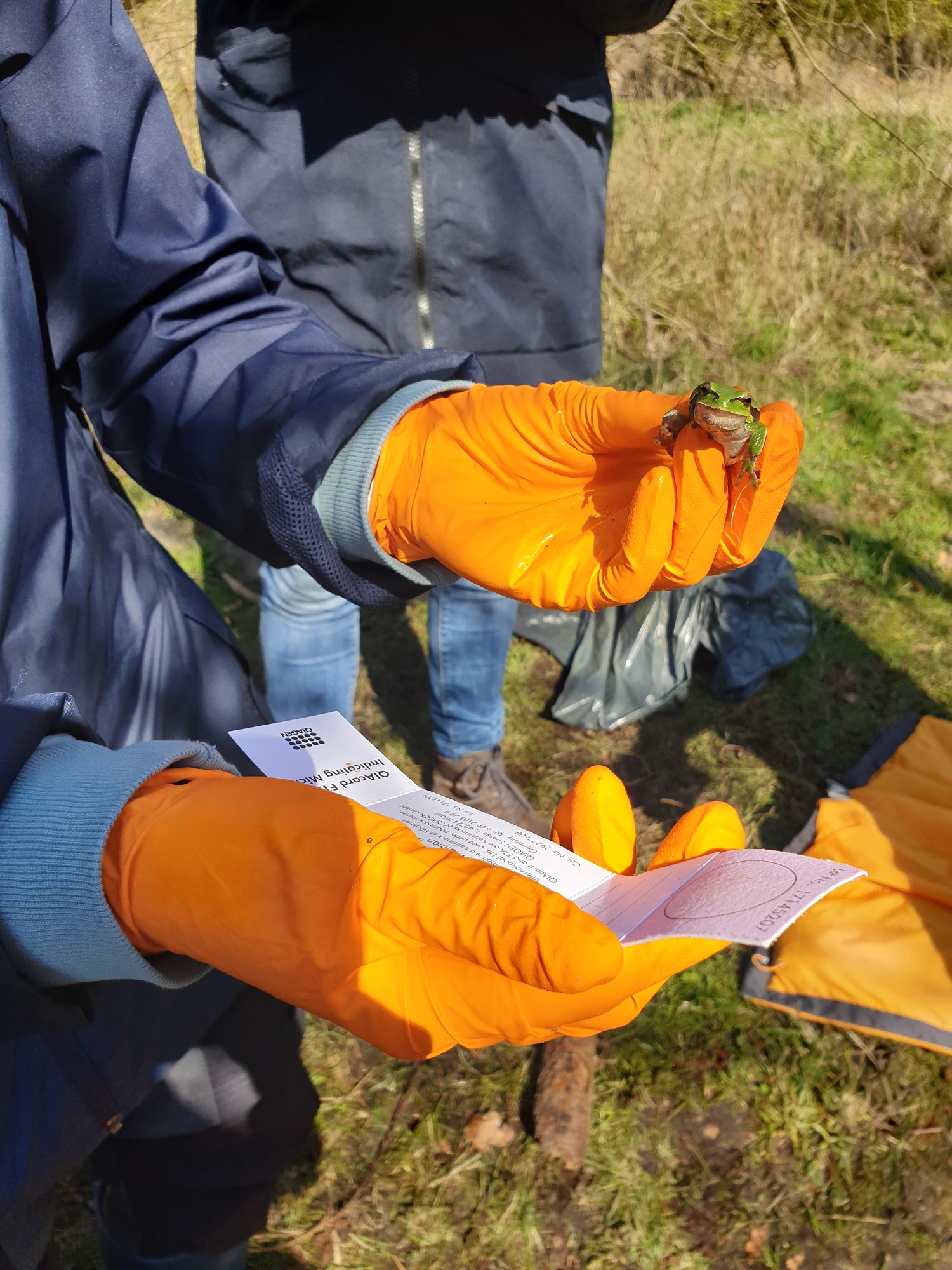
Fieldwork photos of the research team (Images by Christos Kazilas and Ben Wielstra). -
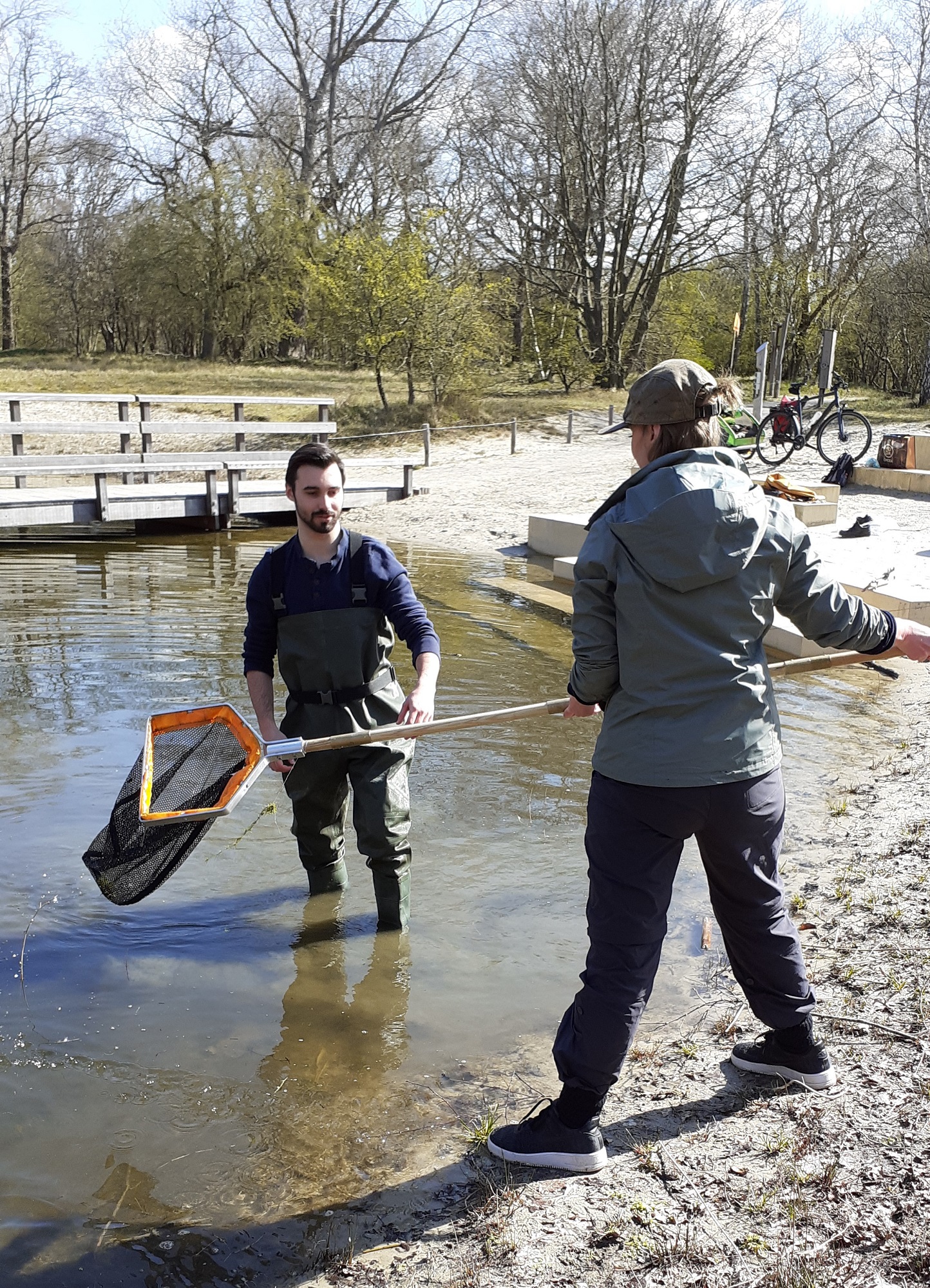
Fieldwork photos of the research team (Images by Christos Kazilas and Ben Wielstra). -
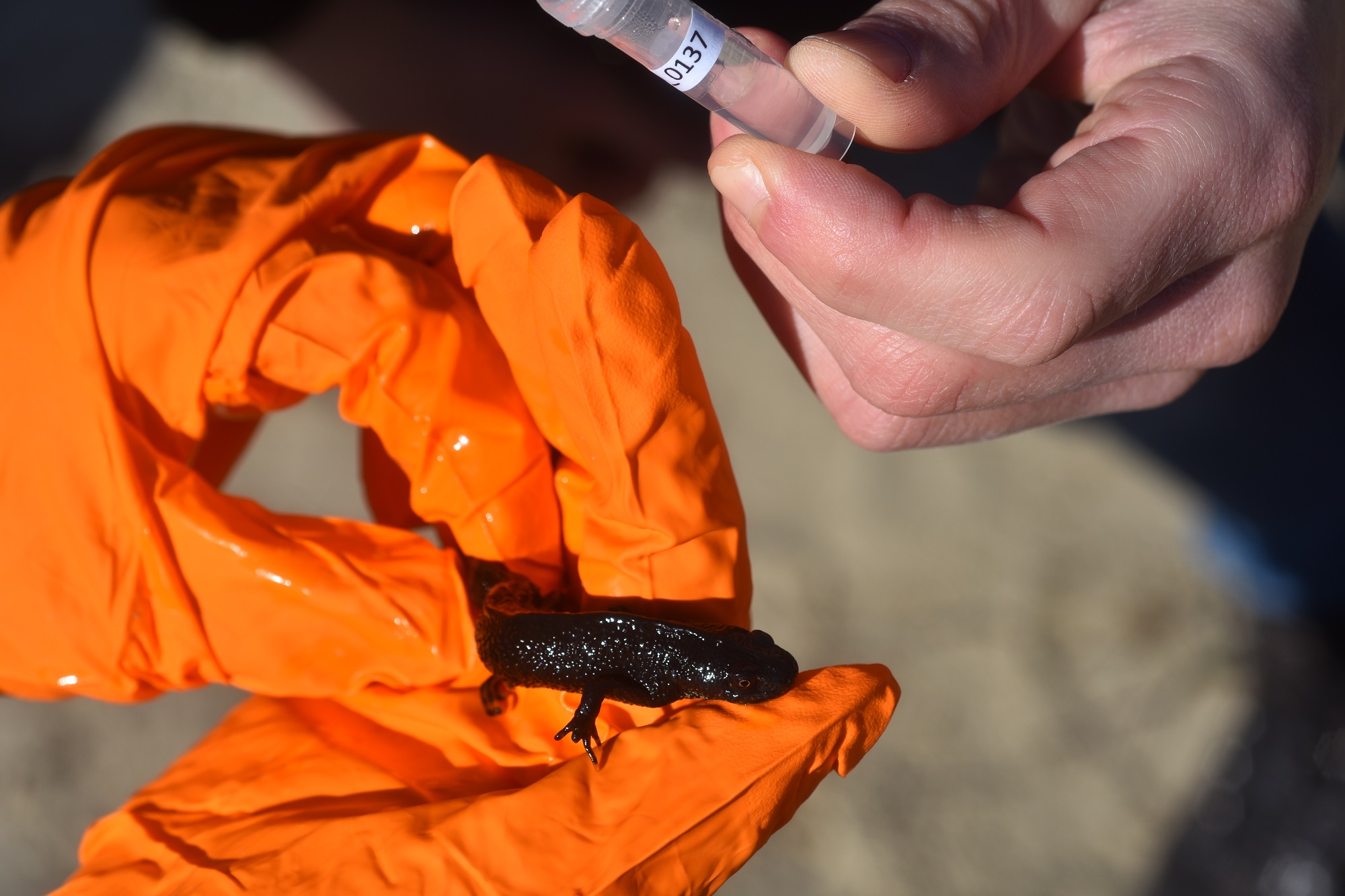
Fieldwork photos of the research team (Images by Christos Kazilas and Ben Wielstra).
Animals still released too often
In most cases, amphibians end up in places where they do not belong because hobbyists ‘dump’ them. While perhaps well-intentioned, it is harmful to nature. De Visser: ‘This can truly lead to an imbalance in the ecosystem in question. Exotics are in the top five of global threats to biodiversity. The problem is bigger than most people realize.’
The importance of localizing exotics
‘By mapping exotic species, we can keep an eye on them and better assess the risks they pose to the local biodiversity,’ says Richard Struijk of RAVON (Reptile, Amphibian & Fish Conservation Netherlands). He is closely involved with the research. ‘In any case, our results are clear: Many exotic amphibians have somehow ended up in the dunes. They do not belong there, but seem to be doing well. For example, the Eastern tree frog population has grown enormously over the past two decades, most likely at the expense of native species.’
The team hopes that as a result of the publications there will be more attention towards and awareness of the danger that exotics pose on biodiversity. ‘For that reason, I also made videos about the projects together with my students. In these videos we explain more about our approach and our findings, in an accessible way,’ says De Visser. The videos can be viewed below.
Due to the selected cookie settings, we cannot show this video here.
Watch the video on the original website orPublications
The four student projects were carried out by the Institute of Biology Leiden (IBL) and Naturalis Biodiversity Center, in close collaboration with RAVON (Reptile, Amphibian & Fish Conservation Netherlands). ARTIS, Dunea, Natuurmonumenten, Staatsbosbeheer and the municipality of The Hague facilitated sampling. The articles about the tree frog, spadefoot toad, crested newt and midwife toad have been published in the journal Amphibia-Reptilia.
- Kuijt, M., Oskam, L., Den Boer, I., Dufresnes, C., France, J., Gilbert, M. J., De Visser, M.C., Struijk, R.P.J.H, Wielstra, B. (2022) The introduction of three cryptic tree frog species in the Dutch coastal dunes challenges conservation paradigms. Amphibia-Reptilia (published online ahead of print 2022)
- Koster, S., Prins, N., Dufresnes, C., France, J., De Visser, M.C., Sruijk, R.P.J.H., Wielstra, B. The conservation paradox of an introduced population of a threatened species: spadefoot toads in the coastal dunes of the Netherlands. Amphibia-Reptilia (published online ahead of print 2022)
- De Brouwer, J., Helder, B., France, J., De Visser, M.C., Struijk, R.P.J.H., Wielstra, B. An isolated crested newt population in Dutch coastal dunes: distribution relict or introduction? Amphibia-Reptilia (published online ahead of print 2022)
- Vliegenthart, C., Van de Vrede, M., Den Boer, I., Gilbert, M., Lemmers, P., France, J., De Visser, M.C., Struijk, R.P.J.H., Wielstra, B. The limits of mtDNA barcoding for determining the provenance of invasive species: a midwife toad example. Amphibia-Reptilia (published online ahead of print 2022)
Text: Manon de Visser, Ben Wielstra, Richard Struijk & Amber Verhaar
